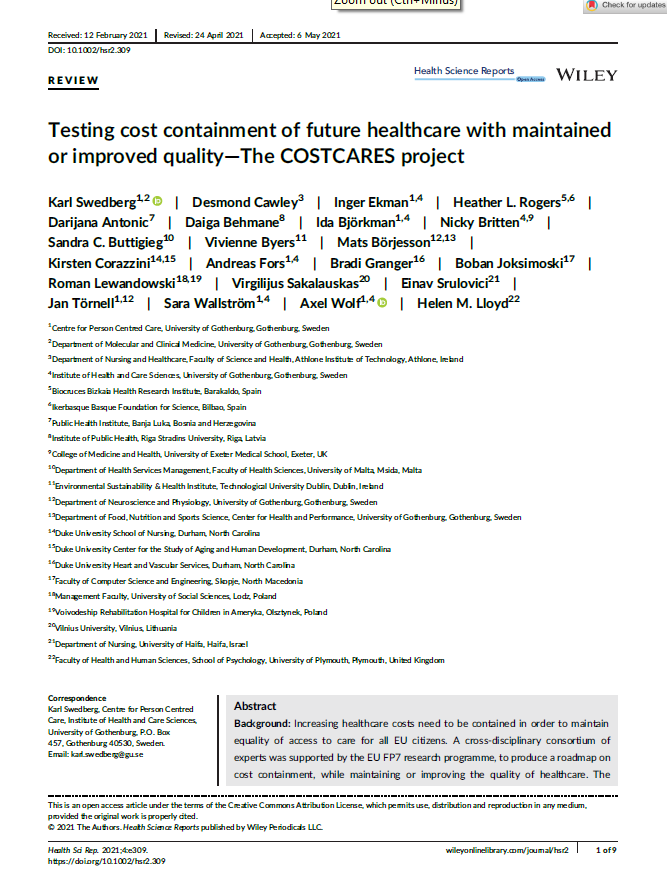"If we want to get men in, then we need to ask men what they want": Pathways to effective health programing for men
| dc.contributor.author | Lefkowich, Maya | |
| dc.contributor.author | Richardson, Noel | |
| dc.contributor.author | Robertson, Steve | |
| dc.date.accessioned | 2018-08-09T08:21:48Z | |
| dc.date.available | 2018-08-09T08:21:48Z | |
| dc.date.copyright | 2015-11-26 | |
| dc.date.issued | 2017 | |
| dc.identifier.citation | Lefkowich, M., Richardson, N., & Robertson, S. (2017). "If we want to get men in, then we need to ask men what they want": Pathways to effective health programing for men. American Journal of Mens Health, 11(5), 1512-1524. doi:10.1177/1557988315617825 | en_US |
| dc.identifier.issn | 1557-9891 | |
| dc.identifier.uri | https://research.thea.ie/handle/20.500.12065/2323 | |
| dc.description.abstract | In Ireland, men’s health is becoming a priority. In line with global trends, indicators of poor mental health (including rates of depression and suicide) are increasing alongside rates of unemployment and social isolation. Despite the growing awareness of men’s health as a national priority, and development of the first National Men’s Health Policy in the world, there is still a concern about men’s nonengagement with health services. Health and community services often struggle to appropriately accommodate men, and men commonly avoid health spaces. A growing body of literature suggests that a persistent lack of support or resources for service providers contributes to their inability to identify and meet men’s unique health needs. This study aims to provide further insight into the ways in which this gap between men and health services can be closed. Semistructured, qualitative interviews were conducted with nine project partners (n = 9) of a successful men’s health program in Dublin. Interviews captured reflections on what processes or strategies contribute to effective men’s health programs. Findings suggest that gender-specific strategies—especially related to community—engagement and capacity building—are necessary in creating health programs that both promote men’s health and enable men to safely and comfortably participate. Moreover, including men in all aspects of the planning stages helps ensure that programs are accessible and acceptable for men. These findings have been operationalized into a user-driven resource that illustrates evidence-informed strategies and guiding principles that can be used by practitioners hoping to engage with men. | en_US |
| dc.format | en_US | |
| dc.language.iso | en | en_US |
| dc.publisher | SAGE Publications | en_US |
| dc.relation.ispartof | American Journal of Men's Health | en_US |
| dc.rights | Attribution-NonCommercial-NoDerivs 3.0 Ireland | * |
| dc.rights.uri | http://creativecommons.org/licenses/by-nc-nd/3.0/ie/ | * |
| dc.subject | health promotion and disease prevention | en_US |
| dc.subject | community outreach | en_US |
| dc.subject | health awareness | en_US |
| dc.subject | health communication | en_US |
| dc.subject | men’s health interventions | en_US |
| dc.title | "If we want to get men in, then we need to ask men what they want": Pathways to effective health programing for men | en_US |
| dc.type | Article | en_US |
| dc.description.peerreview | yes | en_US |
| dc.identifier.url | https://doi.org/10.1177/1557988315617825 | en_US |
| dc.rights.access | info:eu-repo/semantics/openAccess | en_US |
| dc.subject.department | healthCORE - IT Carlow | en_US |
Files in this item
This item appears in the following Collection(s)
-
Health Sciences ITC [23]




